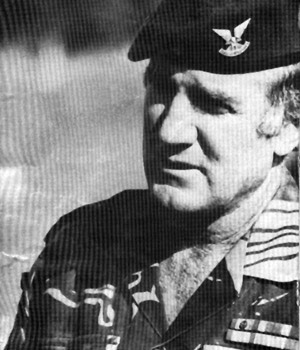I like this, but I have to think, what took you guys so long to think it up? I mean they have already been using these types of paracargo systems for years, and just now the military is thinking about using it for medical resupply?
What really kills me is that they predict they might be up and running with the project by January? I am sorry, but this is ridiculous and so typical of how government operates. Put the stuff in a box, and drop it out of the airplane like you would with ammo, food, and water. Surround it with as much cushioning as it takes to insure it lands in one piece, but either way, get it done.
In the smokejumpers, we have been dropping medical paracargo for a long time. Stuff like oxygen bottles, IV’s and whatever else the mission required. Which is another point to bring up. If they are going to drop this kind of bundle in any kind of wooded areas, it might be wise to also have a set of tree climbing equipment that you can toss out of the aircraft as well. Maybe something that you could drop by GPS chute, and then at a certain altitude the tree climbing box is released with a small drogue keeping it straight but still allowing for speed of the bundle. That way the thing can plow through the trees to the ground.
Or if the aircraft can do a low pass, they could toss out the thing as well. In the jumpers, this is how we would do it, and those boxes would plow through the trees just so the guys on the ground could get to it for tree climbing operations. Because getting medical supplies out of a tree requires the right equipment, and you definitely do not want to keep your patient waiting because of a bundle that is hung up.
The aircraft could also just drop another medical bundle, but if that one gets hung up in the trees or gets lost in a river or destroyed by enemy fire, it will be equally problematic. So it pays to have some back up tree climbing equipment just to be prepared. That is how we did it in the smokejumpers. I realize that most of Afghanistan is not that bad tree-wise, but for those areas that guys are operating in where trees are tall enough, it is something to think about.
Another idea is to use UAV helicopters for the task. If you want to put medical supplies on the ground and with precision, use something like that. That’s if it is too dangerous or the conditions suck for manned flight into that spot.
But going back to the time frame for this. Imagine how many folks have already died, just because this capability was not in place? I say do a couple of test runs to figure out the right kind of packaging for the load, and start this program immediately. You could get this done in a week or two, and not wait until January of next year. Lives could be saved because of it. –Matt
——————————————————————-
GPS-guided parachutes may soon drop blood, medical supplies to wounded troops in Afghanistan
By MARK PATTON
August 11, 2010
WIESBADEN, Germany — GPS-guided parachutes soon could be dropping blood supplies to medics on the battlefield, cutting down the time life-saving medical supplies reach wounded troops.
The military already uses the technology to deliver food, water and ammunition to U.S. forces in remote parts of Afghanistan. Now, the Armed Services Blood Program is working with an Army research center to put blood and other medical supplies under the parachutes instead.
If testing goes as planned, the system could be up and running by January.
Troops needing blood on the battlefield usually have to be evacuated and transported to the nearest medical facility. But evacuation is not always possible when units are under fire or if the weather prevents an emergency vehicle from traveling.
That’s when the Global Position System-guided parachutes can be a lifesaver and allow a wounded servicemember to receive blood during the critical period following an injury, said Air Force Maj. David Lincoln, Armed Services Blood Program deputy director for operations.
(more…)

